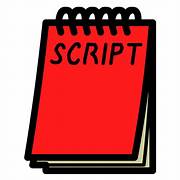
The Art of Scripted Text to Video Transformation: Bringing Stories to Life
Storytelling has evolved from the traditional pages of books to fascinating audiovisual experiences in the digital age. Scripted text can now be smoothly turned into captivating films thanks to advances in technology, opening up a world of possibilities for content providers, educators, marketers, and others. In this blog article, we’ll delve into the intriguing world of scripted text to video transformation, looking at how it works and how it affects our digital landscape.
The Magic Behind Scripted Text to Video Transformation
Imagine taking a beautifully crafted piece of written content and giving it life through moving images, dynamic animations, and expressive visuals. Scripted text to video transformation is the alchemy that makes this possible. It’s the process of converting written words into a dynamic video format, enriching the narrative with engaging visuals, graphics, and audio elements.
At its core, this transformation involves several key steps:
1. Script Analysis and Visual Conceptualization
Every story has a unique essence, and the first step is to understand it. Content creators work their magic by dissecting the script, identifying crucial themes, characters, and emotions. This forms the foundation for the visual concepts that will breathe life into the text.
2. Storyboarding
Storyboarding brings structure to the transformation process. Just like scenes in a movie, the storyboard outlines the sequence of visuals that will complement the text. It’s akin to laying the foundation of a building – setting the stage for the entire transformation.
3. Visual Creation and Animation
Here’s where the real magic unfolds. Artists and animators collaborate to craft visuals that resonate with the script. Characters come to life, settings materialize, and emotions are conveyed through carefully designed animations. This stage is all about weaving artistry into the narrative.
4. Integration of Audio Elements
Sound and music play a pivotal role in evoking emotions. From the rustling of leaves to the crescendo of an inspiring score, audio elements are meticulously chosen to enhance the viewer’s experience. Narration, dialogue, and sound effects are integrated seamlessly to bring depth to the storytelling.
5. Finalization and Polishing
Once the visuals and audio elements are synchronized, the video undergoes final touches. Transitions are refined, color grading is applied, and any remaining imperfections are addressed. This stage ensures that the transformation is cohesive and visually captivating.
The Impact on Content Creation
Scripted text to video transformation goes beyond mere entertainment. It’s a powerful tool that revolutionizes content creation across various domains:
1. Education
Educators can transform complex concepts and dry textbooks into engaging video lessons. Visual aids, animations, and interactive elements can make learning an immersive experience, catering to various learning styles.
2. Marketing and Advertising
For businesses, this transformation is a game-changer. Compelling product descriptions can be turned into captivating video advertisements that resonate with audiences and drive sales.
3. Storytelling and Entertainment
Writers can expand their narratives by bringing their stories to life visually. From short stories to epic sagas, the visual dimension adds depth and intrigue.
4. Information Dissemination
Transforming textual information into videos makes it more accessible and engaging. Complex reports, research findings, and news articles can be communicated effectively to a wider audience.
Closing Thoughts
The world of scripted text to video transformation is a testament to the boundless creativity of humanity and the symbiotic relationship between art and technology. It’s a method that combines words and graphics, providing a unique perspective on tales and information. One thing is certain as we continue to investigate the potential of this transformation: the way we share our tales will never be the same again.







